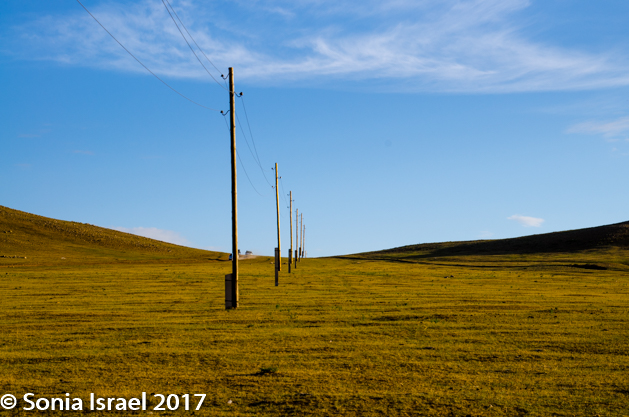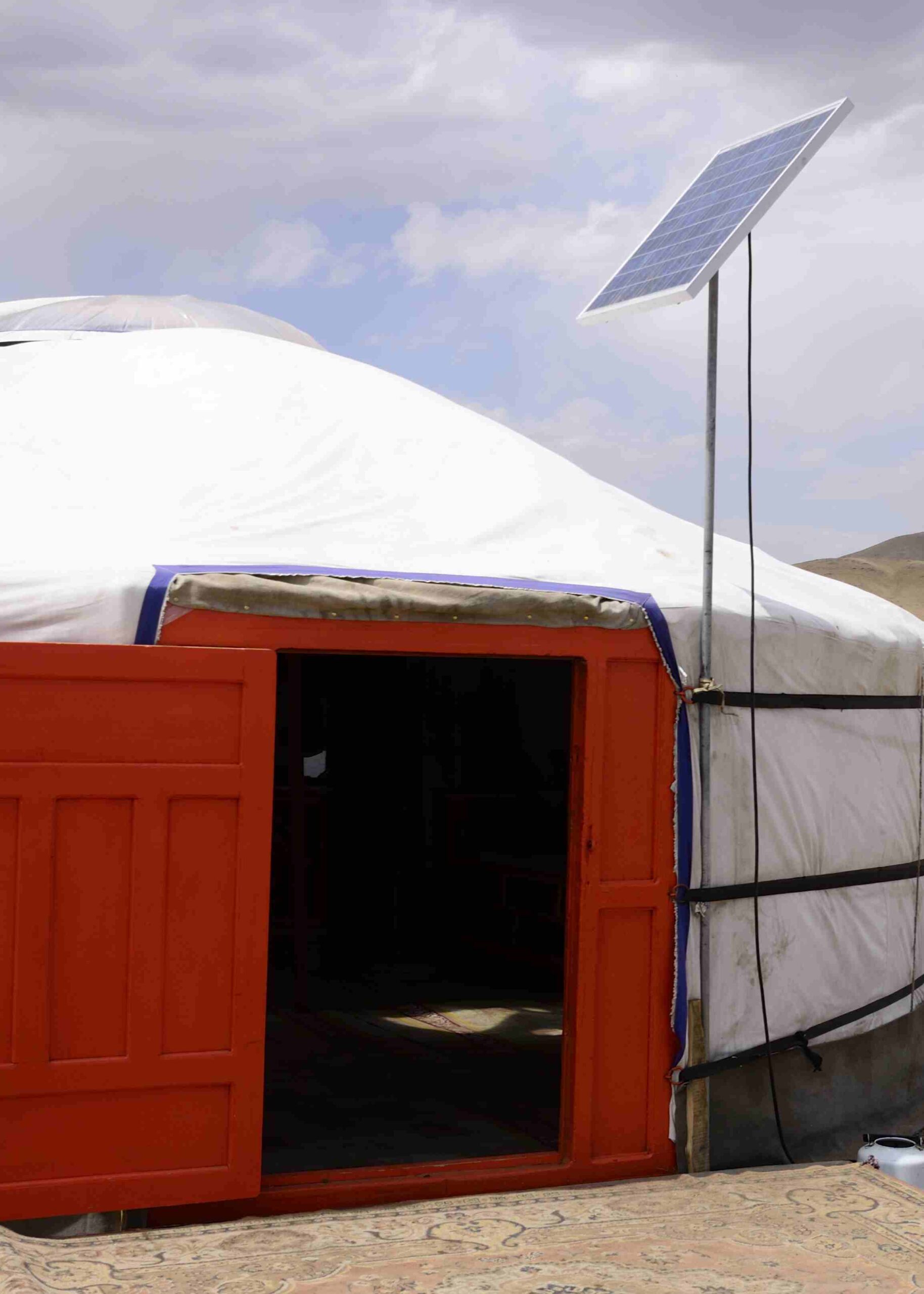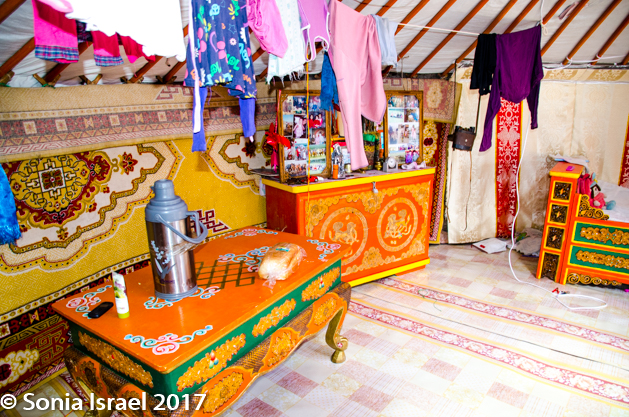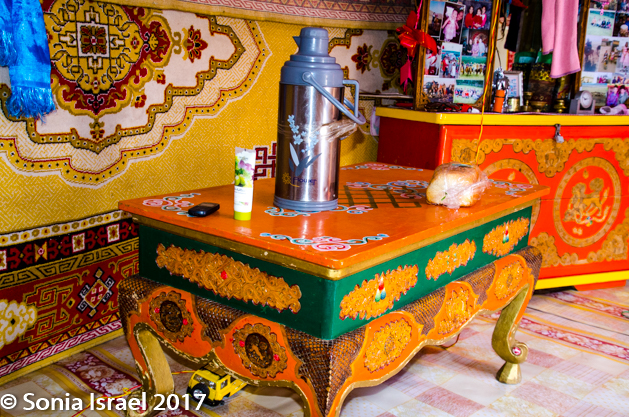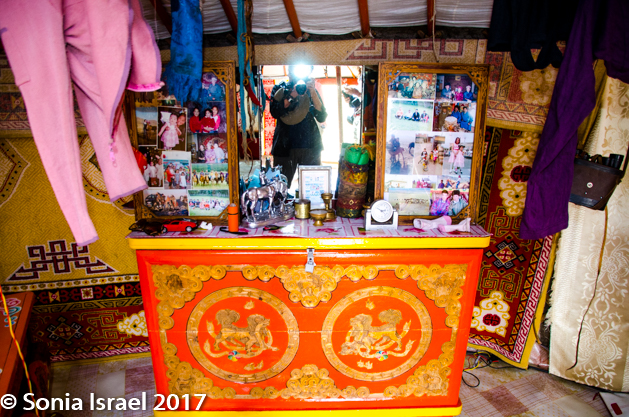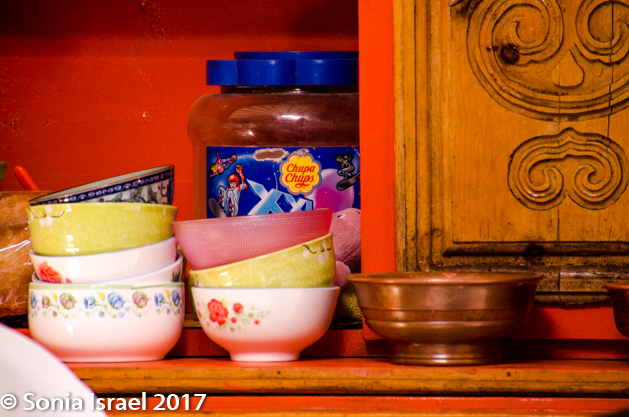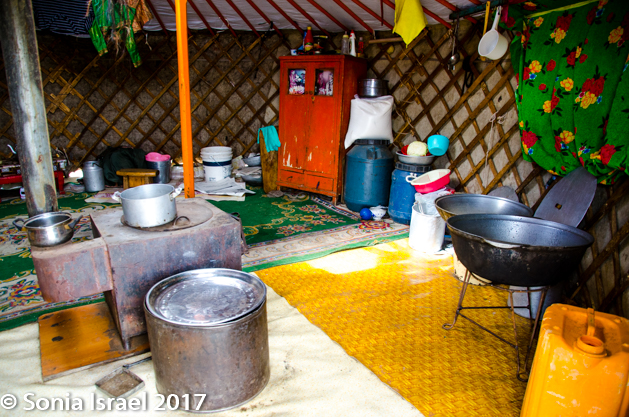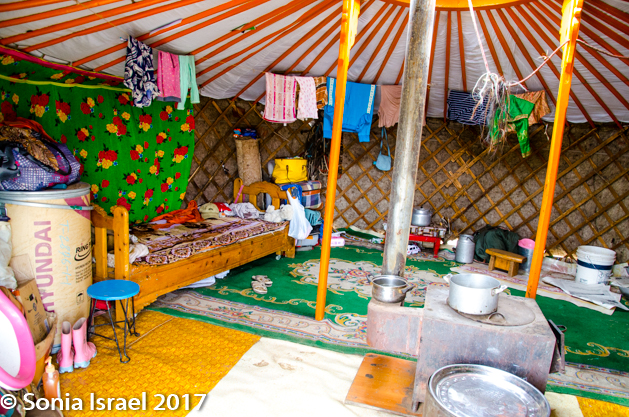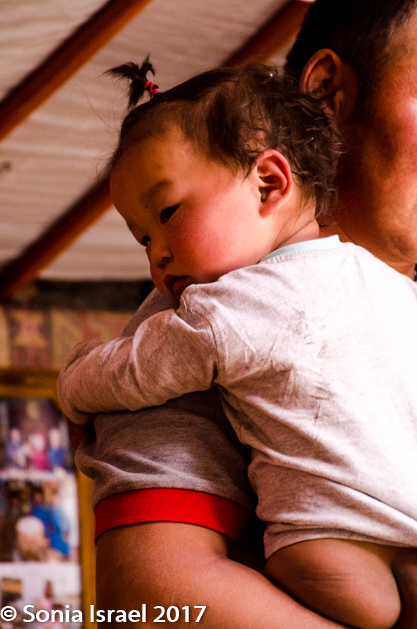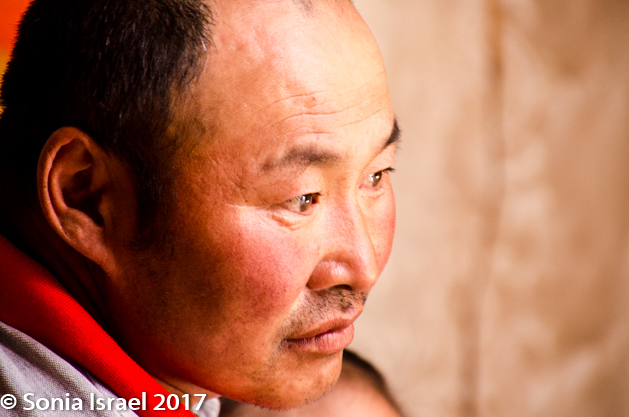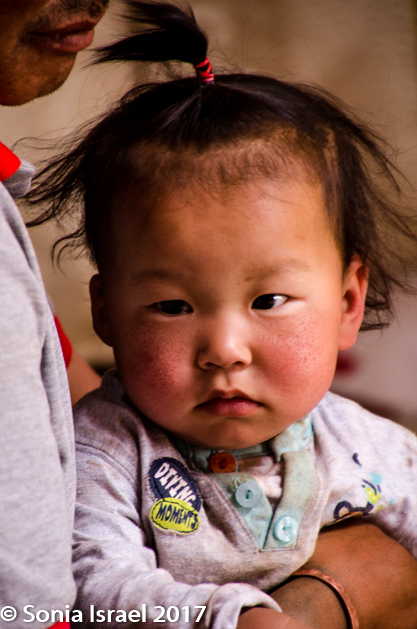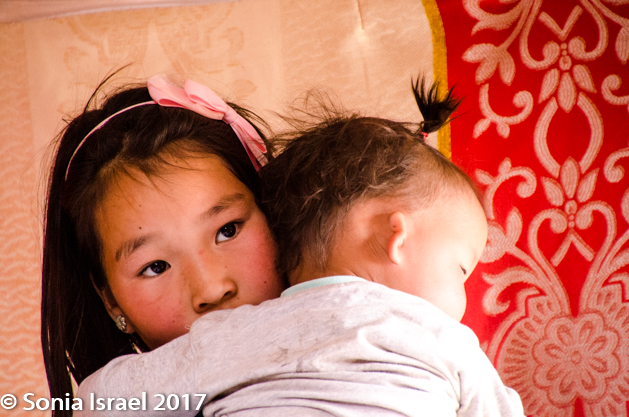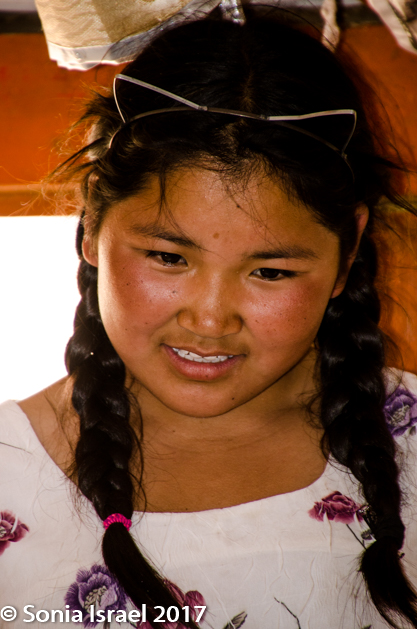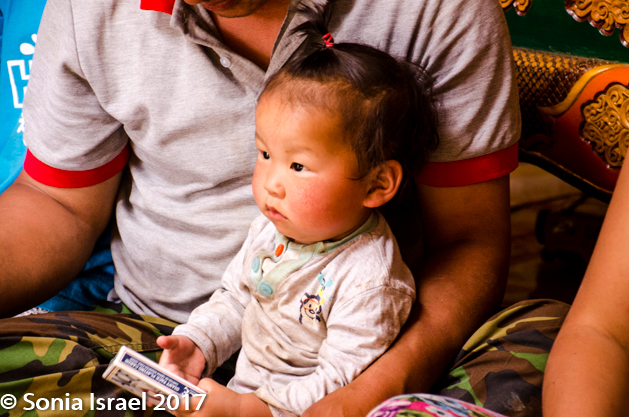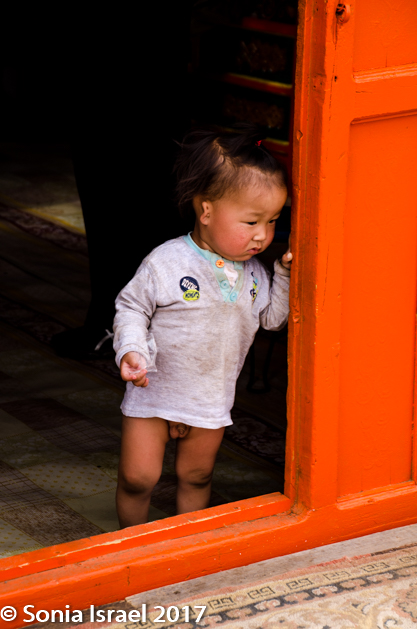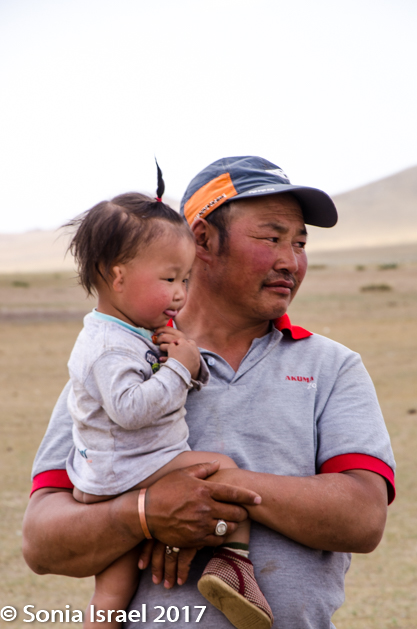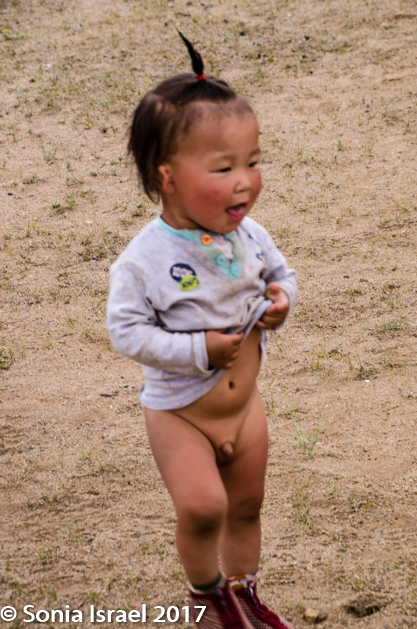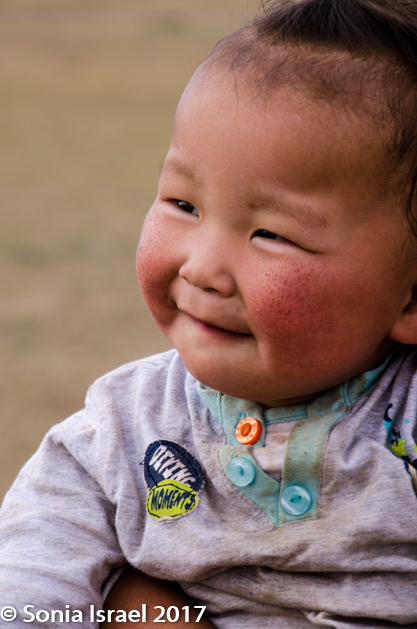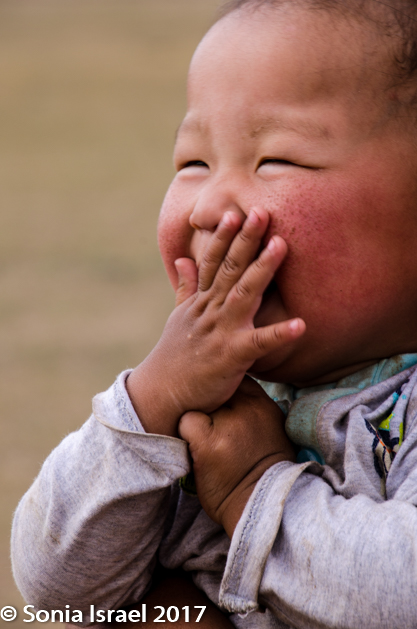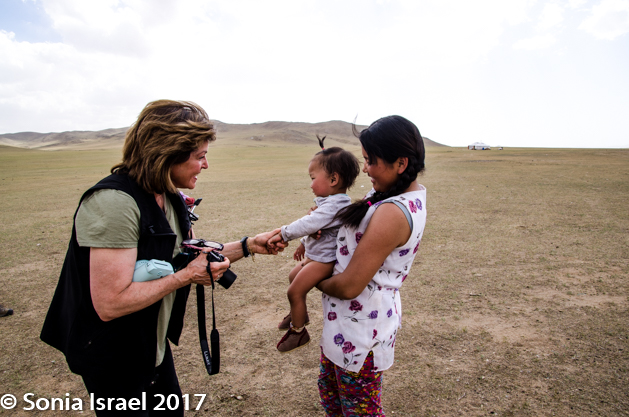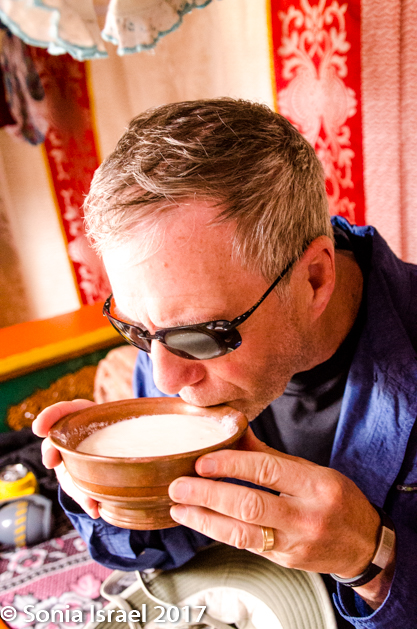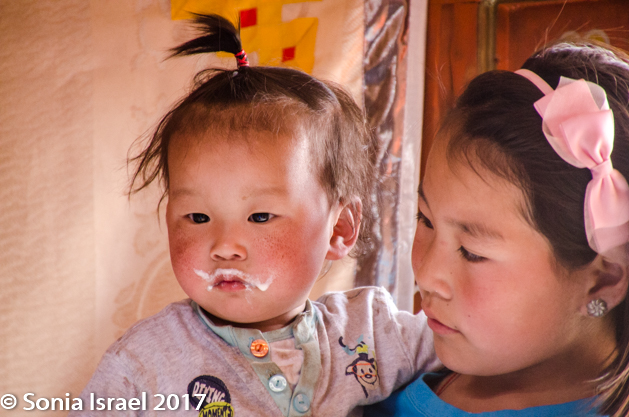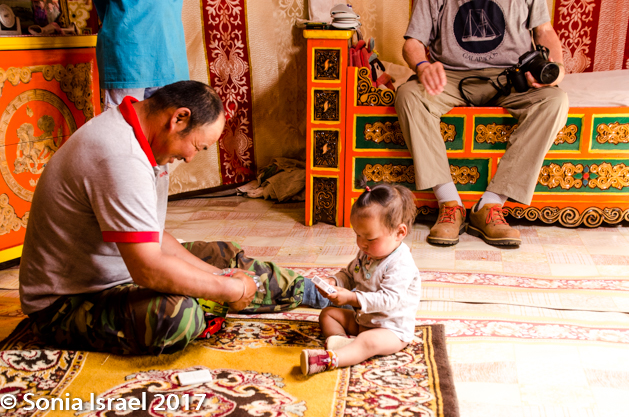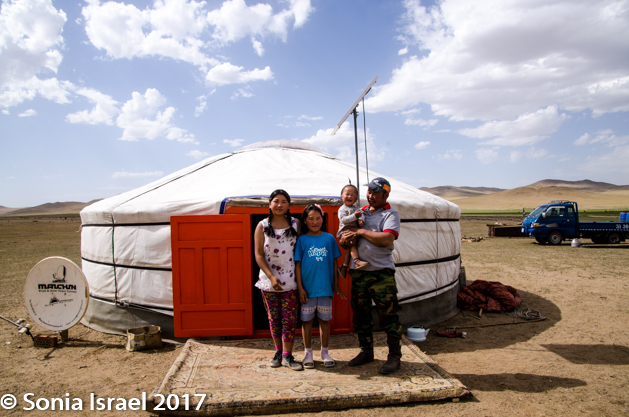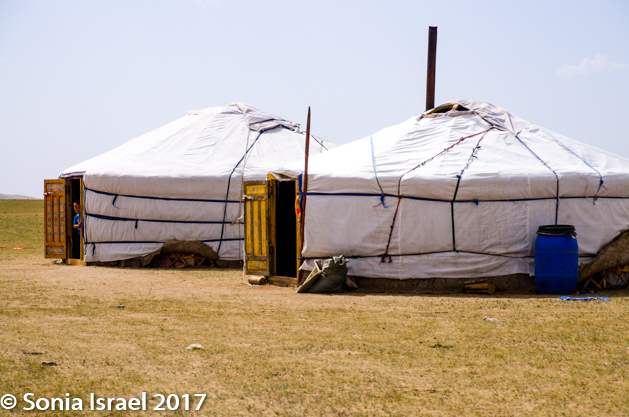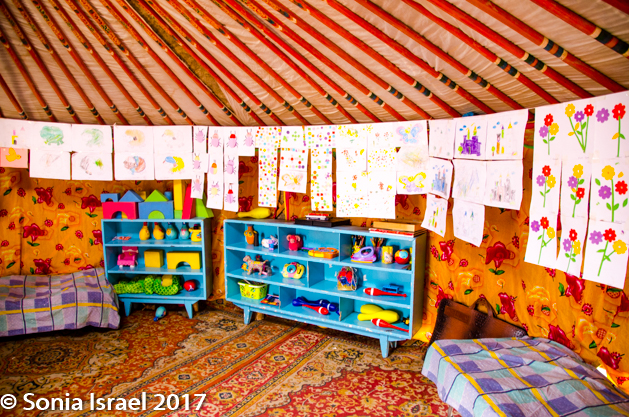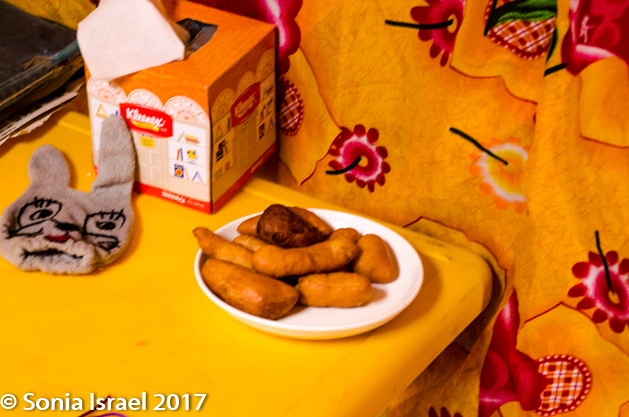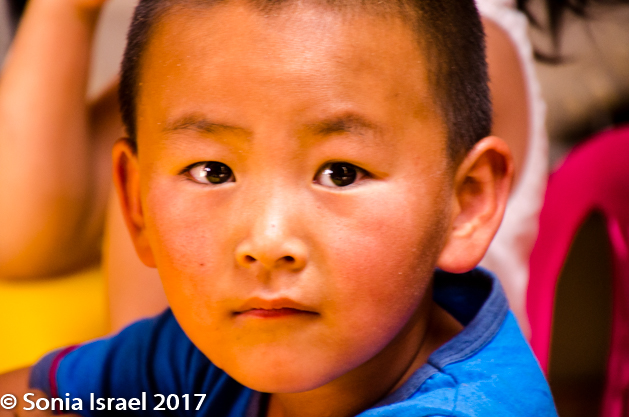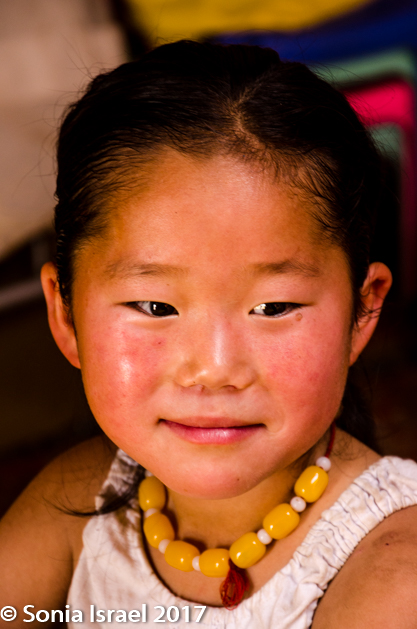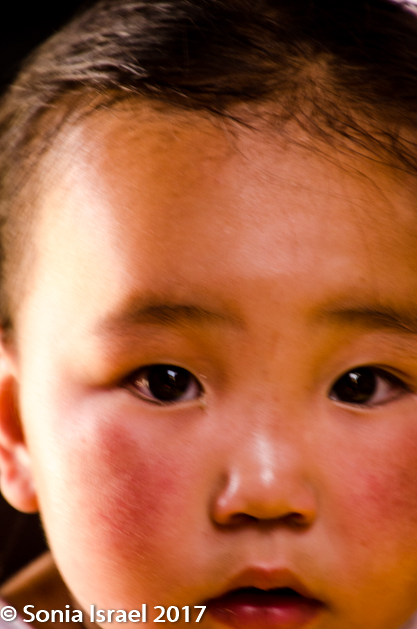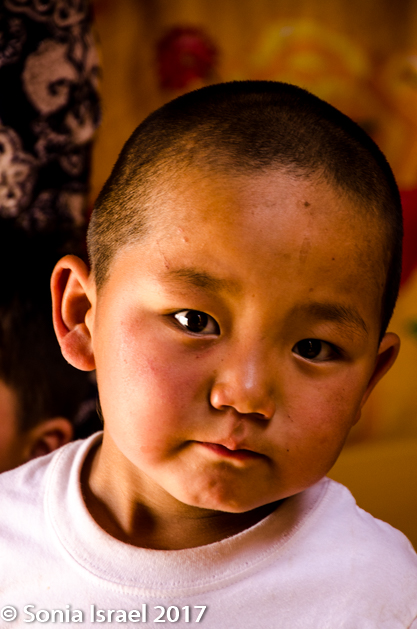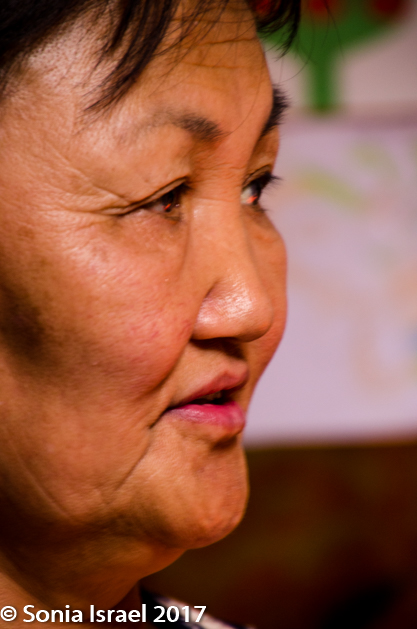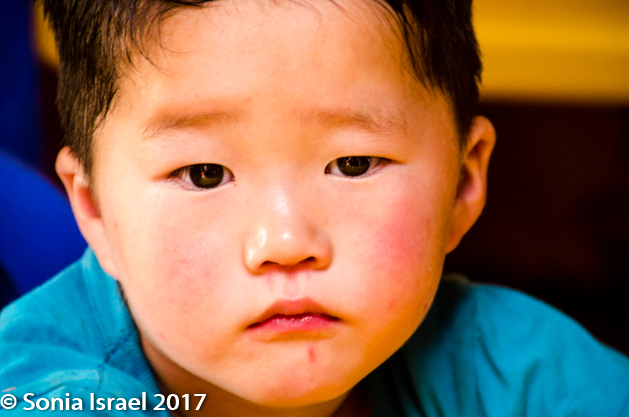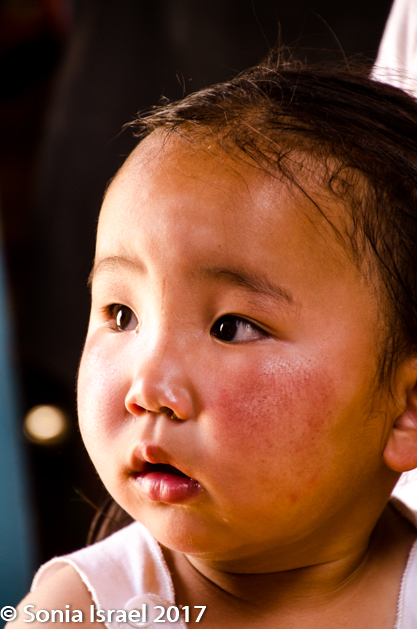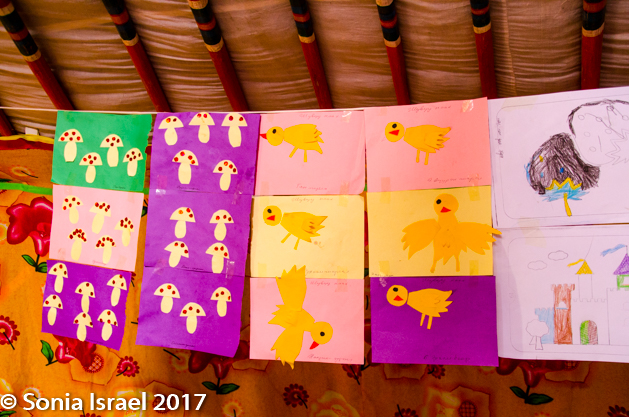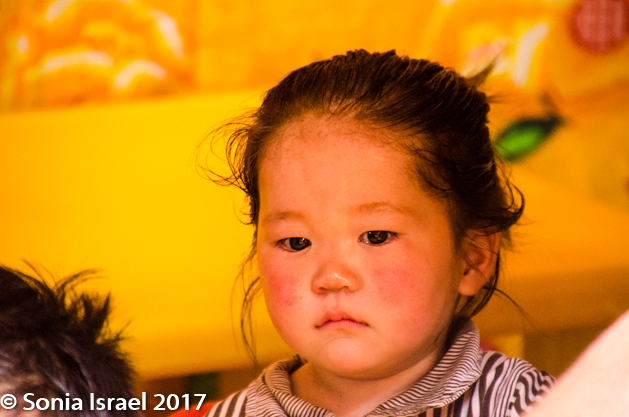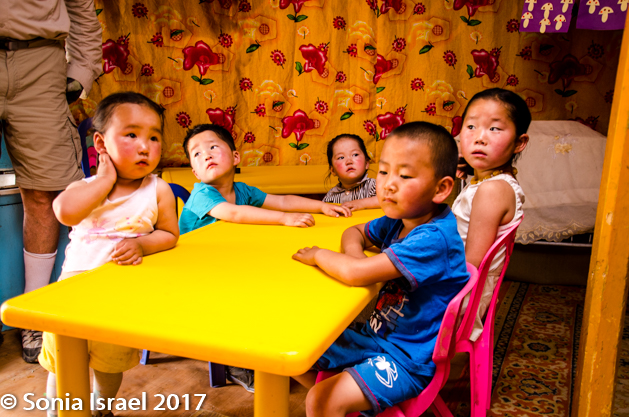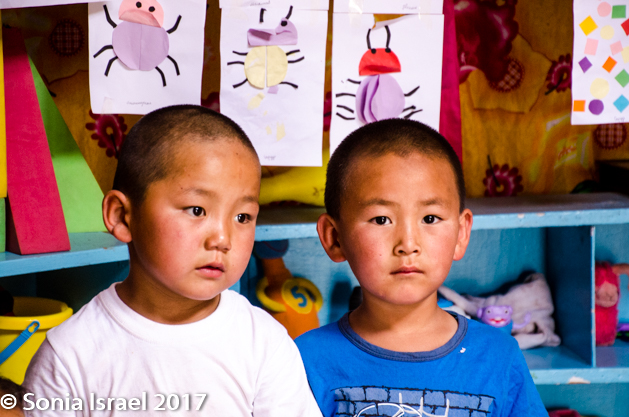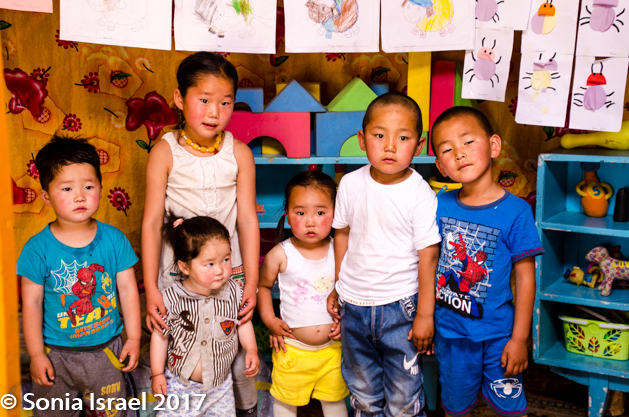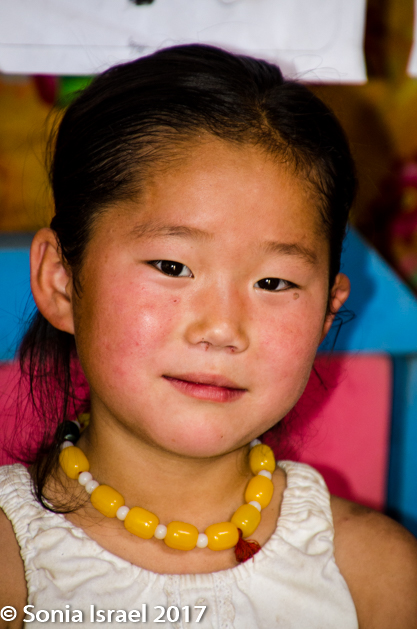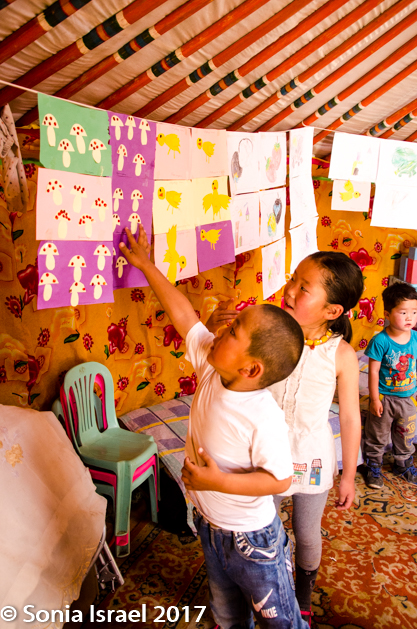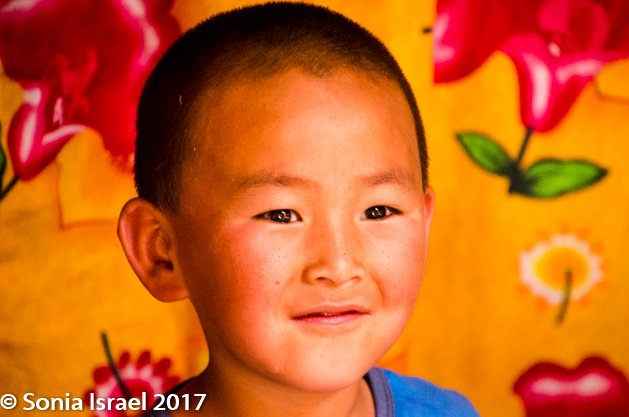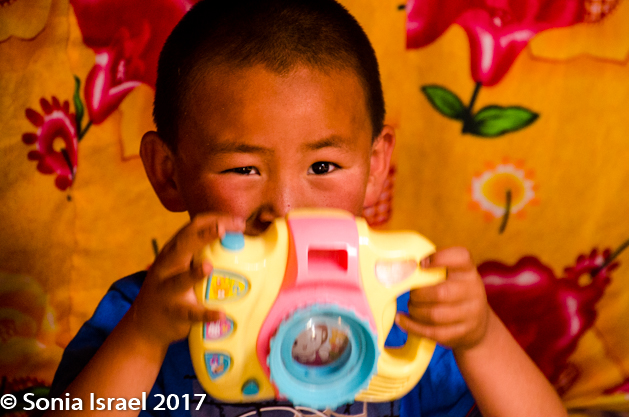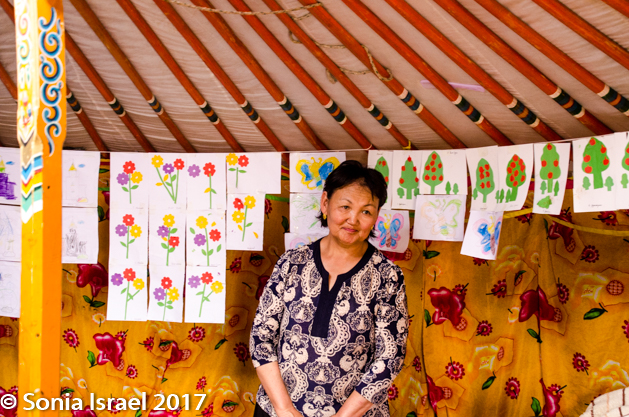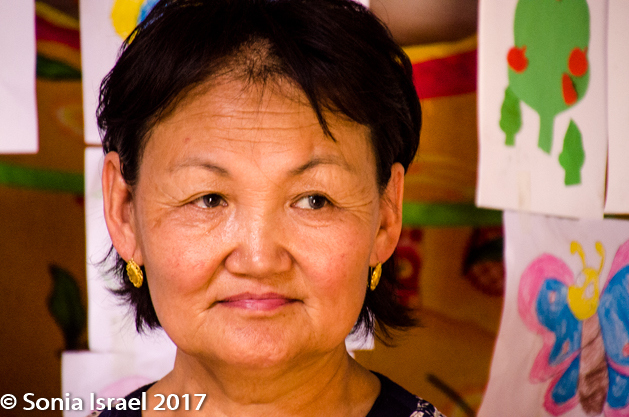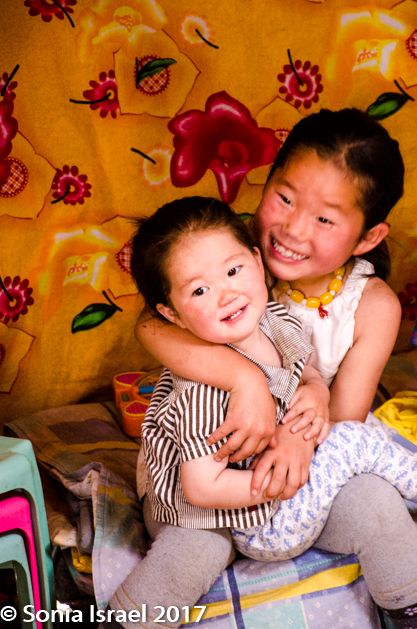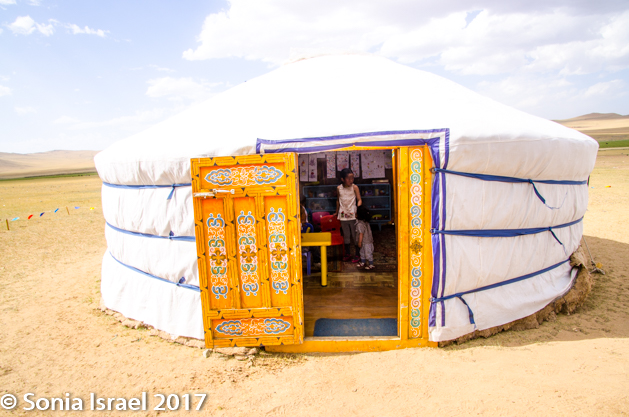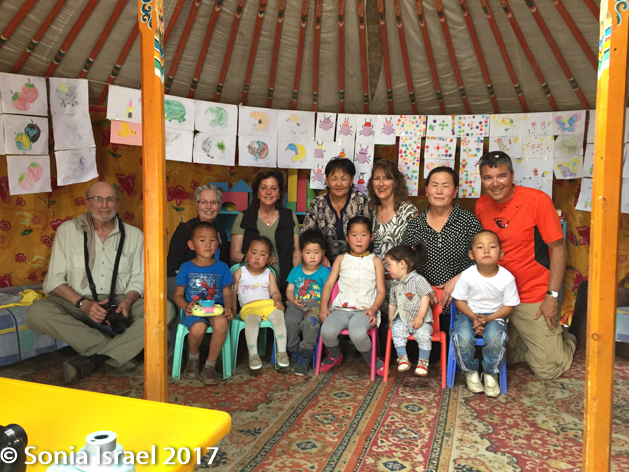National Geographic Trip to Mongolia, Day 3, June 13, 2017
“Nokho khorio” (“Call off the dog”)
In the early afternoon we set out again, this time to visit a nomad family. I asked Azaa how she decided who to visit and how she let them know when we were coming. She laughed and said we would drive around and just pick a ger to stop at. That is the way of the nomads. No advance notice. But always gracious and welcoming. When a stranger stops by, you open your home and offer food and drink. The Mongolians believe that the courtesy you extend to a stranger today will be repaid in the future when the situation is reversed.
Nomads and the nomadic life
Time for a brief lesson on the nomadic life. Mongolia has short, mild summers and long extended, severe winters. The growing season is short so agriculture has never been an option as a constant primary source of food. There are no fields. Vegetables, like cucumbers and tomatoes, are generally grown in green houses in the towns. Instead of being farmers, the nomads raise domesticated livestock to meet their primary needs of food, shelter, clothing and transportation. The nomads are all about finding land for their animals to graze, as animals mean money. The more horses one has, the richer one is. They generally have hundreds of horses, goats, sheep, cattle and camels. The horses and camels were once used to carry things, but now more often, trucks have replaced them. And the horses were ridden to herd the sheep. While we still saw men riding their horses around their herds, we saw more and more motorcycles being used for that same purpose.
And where they once used candles for light, there is now electric posts and wires running in straight lines all through the steppes and desert. And solar panels everywhere, next to the gers.
- Solar panel
When the nomads have to pack up to search for new grazing land, they travel with their family, not with their tribes. If they have to travel long distances, they might travel with their neighbors. But remember, a neighbor may be miles away.
In recent winters, the weather has been extremely cold with lots of snow. Many nomads lost their animals. Sometimes, other nomads might donate a few animals each to help that nomad survive and start over again. Because once a nomad has no animals, he generally moves his family into the city, ger and all, adding to the congestion and pollution of the city. And once in UB, he has to find a job, one that he is likely not qualified for. These nomads would like nothing more than to move back to their homes in the desert and on the steppes.
Our Nomad family visit
So we drove until we got to the ger that Azaa had picked out. All 15 of us descended upon this nomadic family. We were greeted outside the ger by the ever-present dog and a young girl carrying a b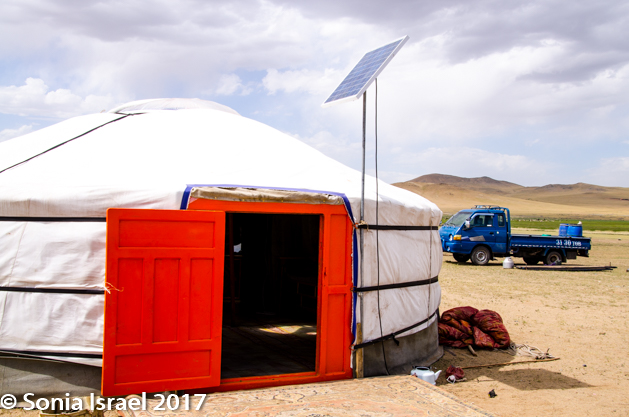 aby. I learned that when you approach a ger you say, “Nokho khorio” which mean “call off the dog.” Every nomad family has a dog not as a pet, but as a guard dog. And you enter with your right foot, never knocking on the door. You might then say, “Ta sa
aby. I learned that when you approach a ger you say, “Nokho khorio” which mean “call off the dog.” Every nomad family has a dog not as a pet, but as a guard dog. And you enter with your right foot, never knocking on the door. You might then say, “Ta sa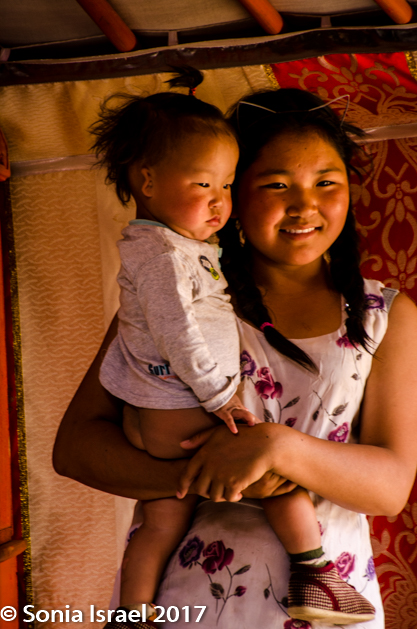 in baina uu?” which means “How are you?” And you don’t shake hands in greeting, but rather you greet each other by stretching out your arms.
in baina uu?” which means “How are you?” And you don’t shake hands in greeting, but rather you greet each other by stretching out your arms.
The ger had the usual orange door with the ubiquitous blue truck beside it.
There were two gers here as one was used as a kitchen and the other to live in. The inside was traditional with a daybed on either side of a stove, a small table with a TV on it, which is always on, a cabinet with a small Buddha shrine. And laundry hanging, crisscrossing the entire ger.
- Kitchen Ger
- Kitchen Ger
The father was there with his two daughters (of three, aged 6, 13 and 15) and his 17-month old baby son. The mother had gone shopping in the village. The baby does not like wearing pants so was naked except for a t-shirt. At one point he squatted and just peed on the floor of the ger. Natural and no inhibitions. We couldn’t help noticing that he had a black and blue mark on his tushy. Azaa told us that all Mongolian children are born with this mark and as they get older, it fades away. Genetics!
The daughters were taking care of the baby and preparing the food. None of them were shy although so many of us suddenly appeared on their door step. The baby came over to some of us and just wanted hugs. The girls served us some yogurt in a bowl which we all passed around and held up to our lips to taste.
(As an aside, we were both hoping and dreading the traditional Mongolian drink, mare’s milk, called Airag, but we were not offered any. Horses are the most important animal of the Mongols and don’t only serve to carry people. The mare’s milk also holds a special status. The mare is milked every 2 hours from 8am. The milk is filtered through cloth and then poured into a large open cow skin bag, (called Khukhuur) which is suspended next to the entrance of the ger. The milk is stirred 1-3000 times in total, little by little by anyone walking through the entrance. And why would we dread it? It has 7-8% alcohol in it! The fermentation process is caused by a combination of lactic acid bacteria and yeast, similar to Kefir. The stirring makes sure that all parts of the milk are fermented equally. And if you are given mare’s milk, you don’t have to drink it; you can raise your hand above your head and flick our finger to the four winds which is offering a taste to the gods. You then return the bowl or cup to the person who handed it to you.).
Those of us that brought gifts, gave them to the family. I brought pens and postcards and little toy animals. One of our group, Marilyn, brought a polaroid camera so she could give the pictures to the families we visited. Brilliant! And the family posed for us for an official portrait.
- Playing with toys we brought
The father, with Azaa translating, told us that they move more than 4 times a year, at each season to find grazing grass for the sheep and goats. He has about 700 animals, including 60 horses. He said “about” as it is bad luck to say the real number. He makes his money from selling the goat cashmere to a broker who comes around to collect it. One goat will provide about 200-300 grams of cashmere. The red goats are premium as that is the best cashmere. If they need more money, particularly in the winter, they will sell some animals.
And how do the nomads tell their animals from those of their neighbors? There are 200 colors of horses and each herder identifies his horses by their color. And by branding them. The goats and sheep have their backsides painted or are marked on their ears.
The nomadic children often go to school in the villages where they stay in dormitories or the mother will usually move to the village to be with the young kids, taking the babies with her. The father and older children stay to take care of the animals.
Kindergarten
While we were visiting, a woman came by to say hello and to invite us to the gers 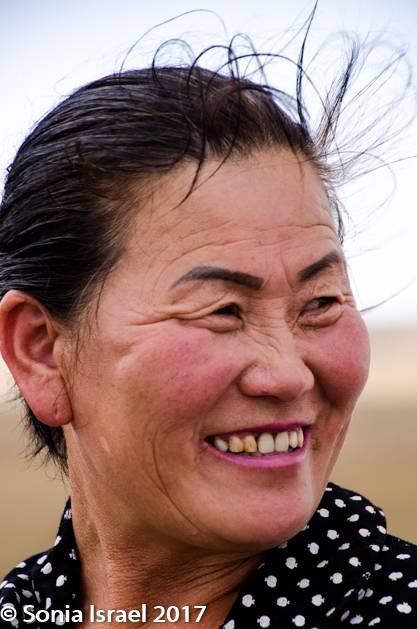 about 200 yards away. This was the local kindergarten. Kindergarten is paid for by the government and is a place for the young, preschoolers to g
about 200 yards away. This was the local kindergarten. Kindergarten is paid for by the government and is a place for the young, preschoolers to g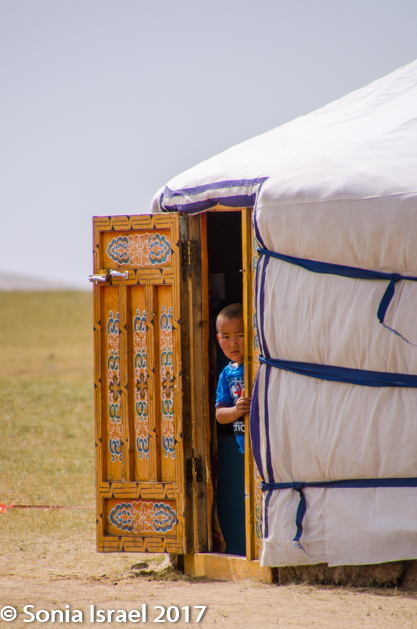 o.
o.
As we approached, one of the kids peeked out of the door. And then ran back inside.
We came in and they invited us to sit and have cookies with them. There were two teachers and 5 children. The kids were coloring and their drawings hung all around the ger. One little boy took a toy camera and pretended to take pictures of us as we took pictures of them. They then performed a song for us and we all posed for a group picture. They all had these beautiful, haunting faces with big smiles, except when we lifted our cameras, when they suddenly got serious. We had to catch them unaware if we wanted to document those smiles.

